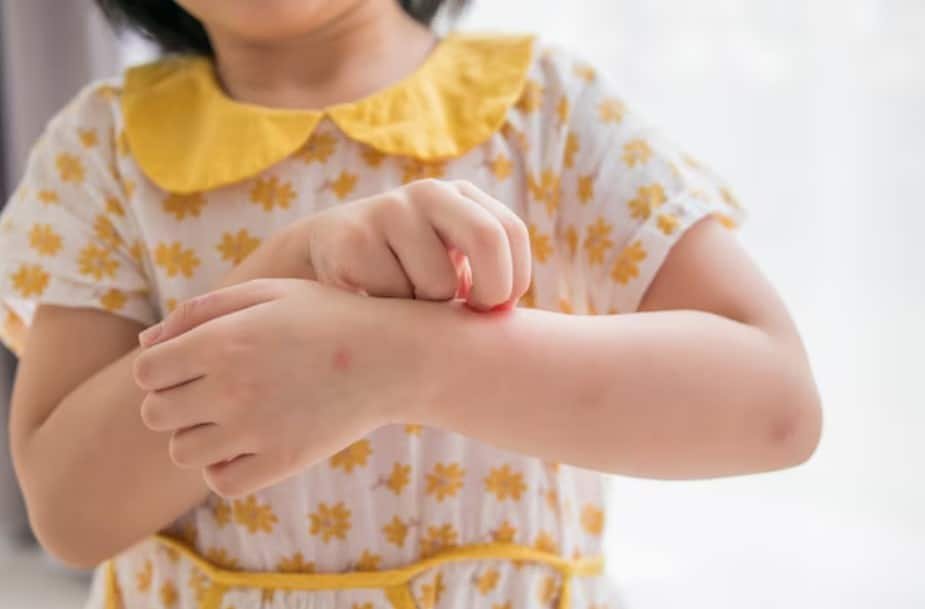Dealing with bed bugs isn’t just a hassle for your home; when it comes to children, it can turn into a real concern. Kids are more sensitive to the bites of these little pests, making it essential for parents to know how to spot and handle them. Understanding the symptoms of bed bug bites and knowing how to treat them can make a big difference in ensuring your child stays comfortable and safe.
Recognizing and treating bed bug bites early helps prevent potential complications, like skin infections from constant scratching. It’s not just about stopping the itch; it’s about making sure the little ones can play, rest, and explore without worrying about these bites disrupting their day. Let’s dive into some helpful tips to identify and manage bed bug bites in children, making life a little easier for both you and your child.
Signs and Symptoms of Bed Bug Bites in Children
Children often react differently to bed bug bites than adults do. The most common symptoms are itchy red bumps on the skin, much like a mosquito bite. These can appear anywhere on the body but are often found in clusters or a line on areas exposed during sleep, such as the arms, neck, and face.
Here are some ways to spot a bed bug bite on your child:
– Red, Itchy Bumps: Usually appear in rows or clusters and can look a lot like other insect bites.
– Swelling: Some children may experience mild swelling around the bite area.
– Scratching: Since the bites can be extremely itchy, constant scratching is common, which may lead to skin infections.
Differentiating bed bug bites from other types of insect bites or skin rashes can be challenging, but paying attention to the patterns and parts of the body affected can help. Unlike flea bites that are often around the ankles, bed bug bites can occur anywhere there’s skin and usually appear in lines. Also, unlike an allergic rash, bed bug bites don’t generally spread over large areas.
Knowing these signs allows parents to respond promptly and seek appropriate solutions. If you’re uncertain whether you’re dealing with bed bug bites, considering professional guidance can offer peace of mind and expert advice tailored to your situation.
Immediate Steps to Take When a Bed Bug Bite is Suspected
Once you suspect your child has been bitten by bed bugs, quick action is the key. Here’s a simple guide to help you manage the situation effectively:
1. Clean the Area: Start by washing the affected skin with mild soap and water. This helps reduce irritation and prevents infection from scratching.
2. Apply a Cold Compress: Use a cold compress or an ice pack wrapped in a cloth to reduce swelling and soothe the itch. Hold it on the bite for about 10 minutes for maximum relief.
3. Use Anti-Itch Creams: Over-the-counter anti-itch creams or lotions can help manage the itchiness. Look for products with calamine lotion or those designed for sensitive skin to ensure safety for children.
4. Monitor for Signs of Infection: Keep an eye on the bites for signs of infection, such as increased redness, warmth, or pus. If these occur, it may be wise to consult a healthcare provider.
Children often have sensitive skin that can react strongly to bites, so minimizing scratching is important. Encouraging kids to distract themselves can help, or try covering the bites with a bandage to reduce irritation. If scratching leads to a rash or ingrown infections don’t resolve, seeking medical advice might be the best route to ensure proper care.
Effective Treatments for Bed Bug Bites in Children
Although bed bug bites often heal on their own without needing special treatment, certain methods can offer quick relief and promote healing. These methods can make your child’s experience more manageable:
– Over-the-Counter Remedies: Products like hydrocortisone creams or antihistamines are great for alleviating itching and reducing swelling.
– Home Remedies: Applying a paste of baking soda and water can soothe bites naturally. Likewise, oatmeal baths are a gentle option for easing irritation.
– When to See a Doctor: If bites appear infected or your child experiences allergic reactions like difficulty breathing or swelling, immediate medical attention is crucial.
Avoid using strong medications or treatments meant for adults, as these can harm your child’s skin. Keeping an eye on how your child’s skin reacts to each remedy helps in choosing the most effective and comfortable method. Children respond differently, so what works for one might not work for another.
Preventing Future Bed Bug Bites
Preventing bites in the first place is always better than treating them afterward. Establishing a few home practices can greatly reduce the risk of an infestation:
– Regularly Inspect Beds and Furniture: Check for signs of bed bugs such as small rust-colored stains or a musty smell.
– Wash Bedding Frequently: Use hot water to wash bedding, clothes, and stuffed animals. High temperatures can kill any pests lurking in fabrics.
– Reduce Clutter: Less clutter means fewer places for bed bugs to hide.
Professional inspections and treatments are the most reliable methods to prevent infestations from worsening. Bed bug bite specialists possess the tools needed to thoroughly screen and treat a home, making them a wise choice for ensuring a bed bug-free environment.
Safeguarding Your Family’s Comfort
With the right knowledge and a proactive approach, managing bed bug bites becomes less challenging. Understanding signs and knowing how to treat bites are vital in making sure your child remains both comfortable and healthy. Exploring professional help when needed keeps the problem from escalating, ensuring your home remains a safe and welcoming space for everyone.
Keeping your family safe from bed bugs takes patience and the right help. If your child is dealing with bites or you’re concerned about a possible infestation, getting support from experienced bed bug bite specialists can make a big difference. Tulsa Bed Bug Exterminator offers targeted treatments to help protect your home and give you lasting peace of mind.


Recent Comments